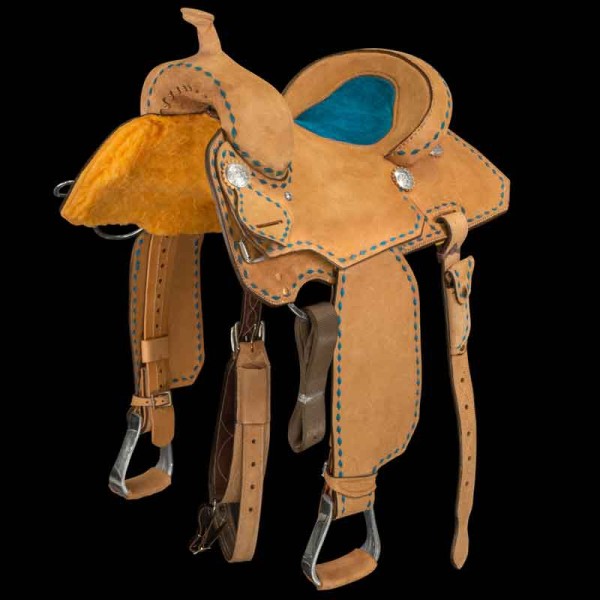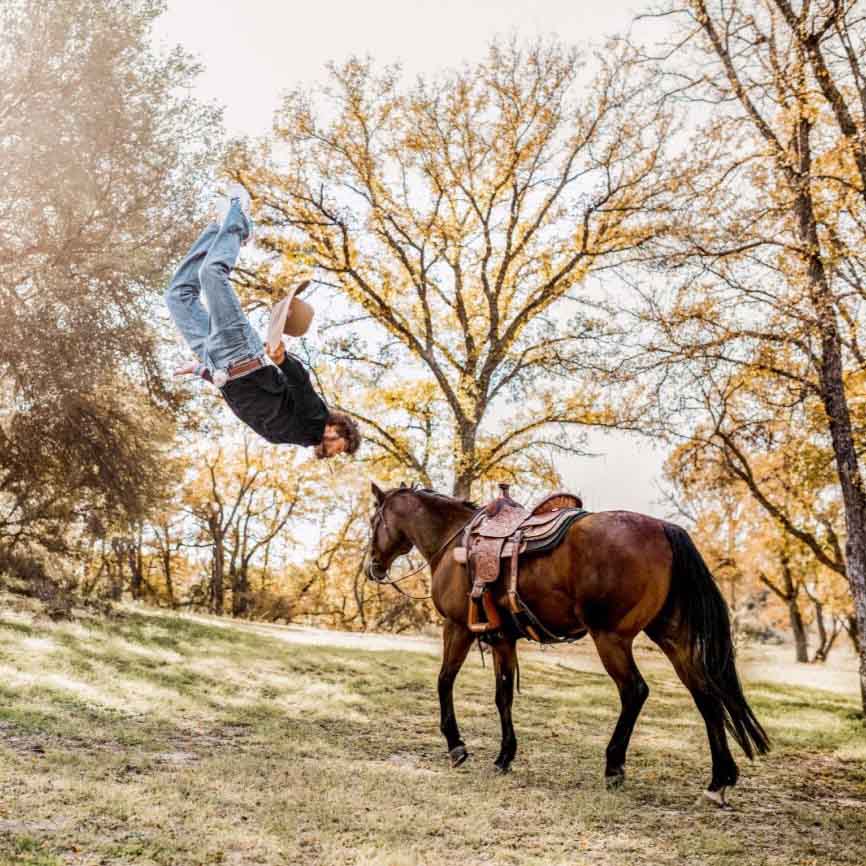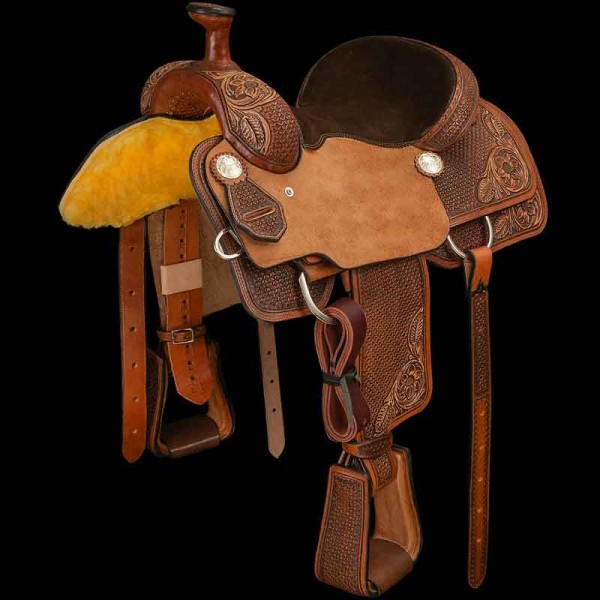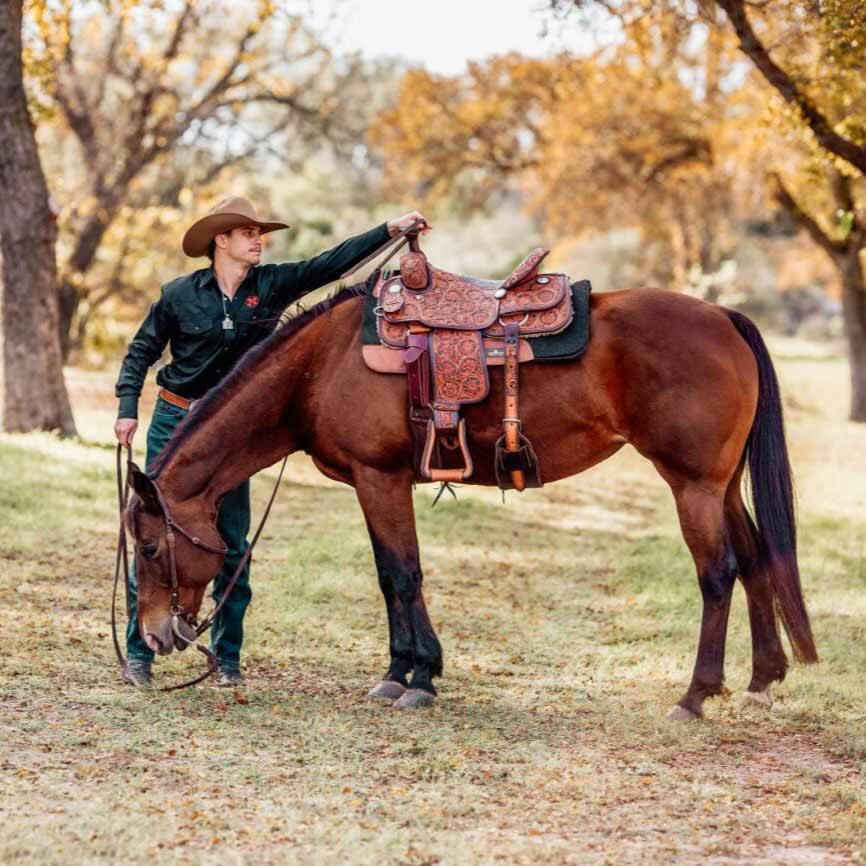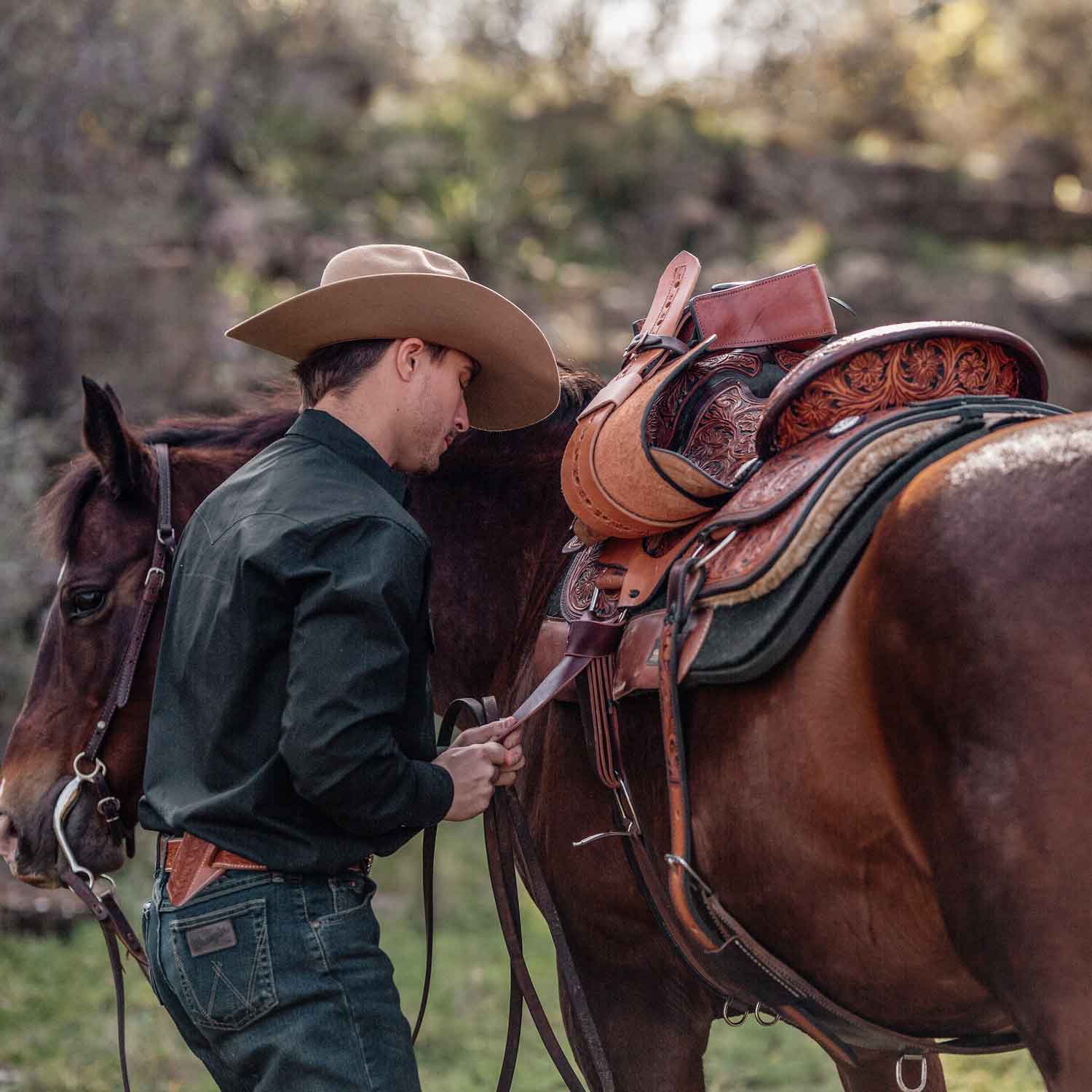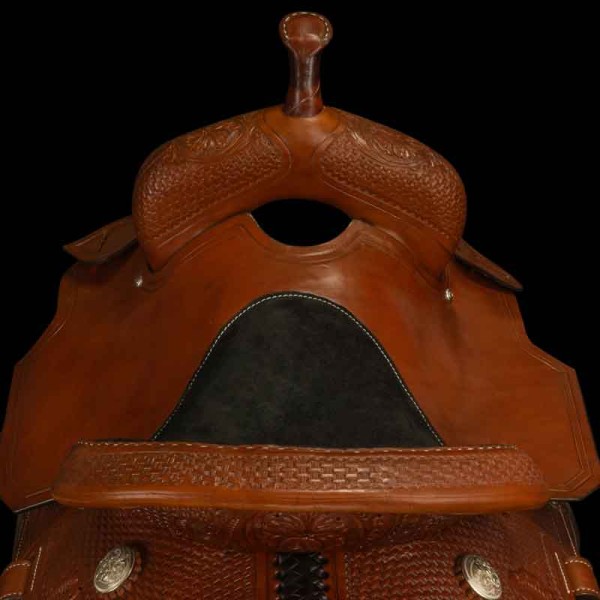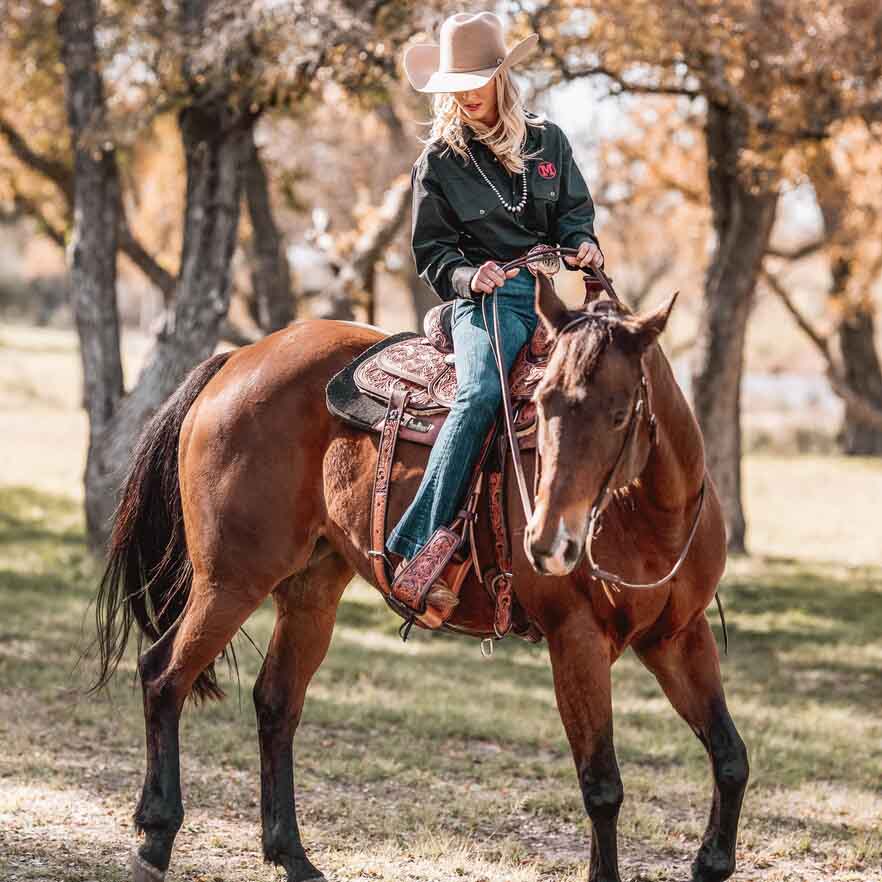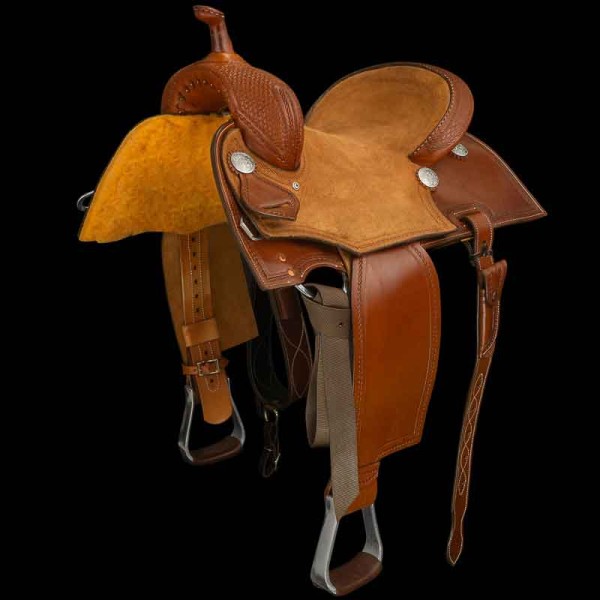Western Saddles
Showing 1 to 16 of 20 (2 Pages)
A horse saddle serves as a bridge between rider and horse, symbolizing partnership and collaboration. Tailored to various styles like English and Western, it evenly distributes the rider's weight, provides attachment points for reins and breastplates, and ensures the horse's back is protected during rides. Feel the raw power beneath you as you settle into our expertly crafted western saddles. Designed for champions, our saddles epitomize strength, durability, and style. Picture yourself thundering through rugged terrain, your trusty saddle ensuring a seamless connection with your horse. Whether you're conquering the barrels or commanding the trails, our saddles will be your steadfast partner, ready to take on any challenge. Elevate your ride, embrace the western spirit, and experience the thrill of true cowboy craftsmanship.
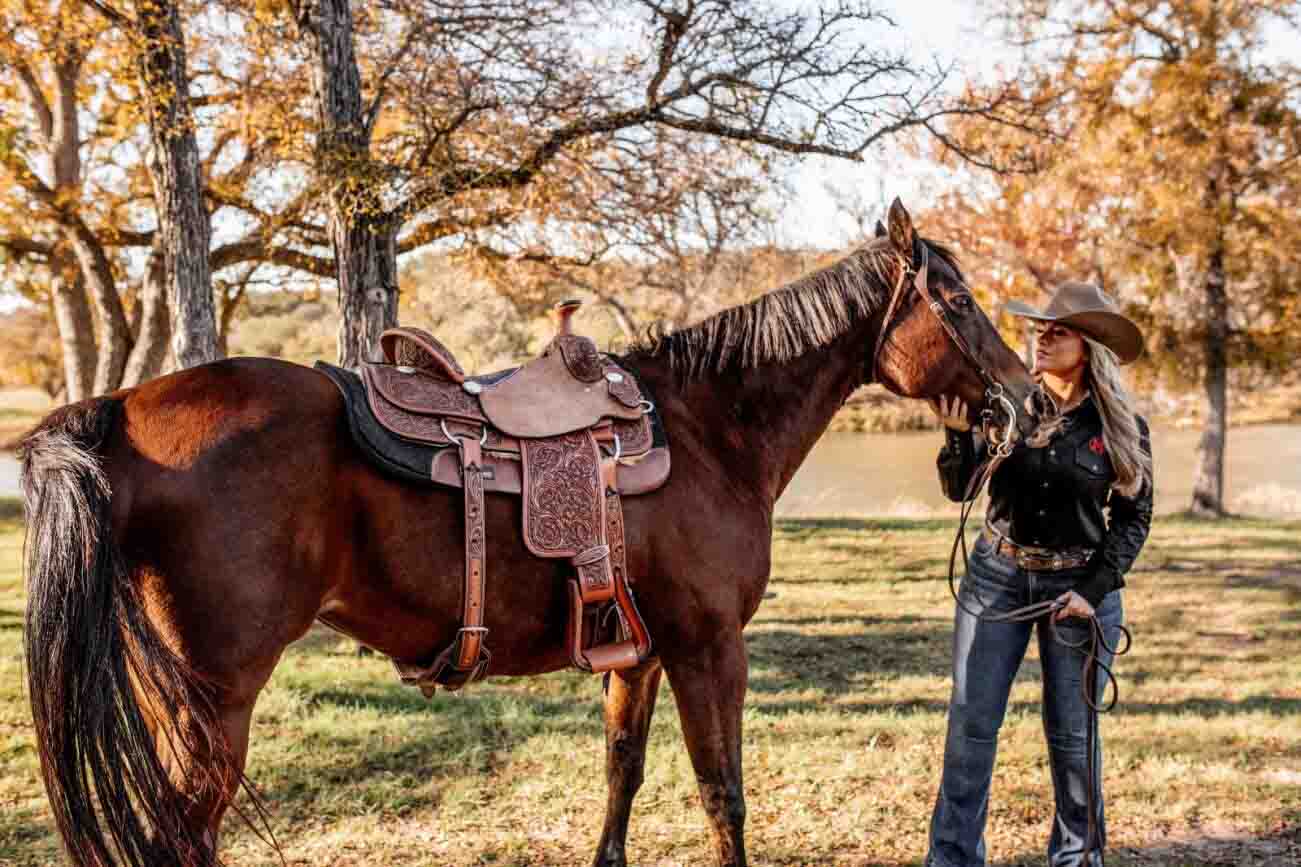
![]() Each handcrafted piece is backed by a repair warranty*, ensuring durability and quality that transcends time.
Each handcrafted piece is backed by a repair warranty*, ensuring durability and quality that transcends time.
![]() We offer prompt express delivery. Saddle orders arrive within 40-50 days, with in-stock options delivered even sooner (1-2 days).
We offer prompt express delivery. Saddle orders arrive within 40-50 days, with in-stock options delivered even sooner (1-2 days).
![]() Tailor your saddle exclusively online at mollyscustomsilver.com or by reaching out to our Customer Service Experience at (682) 717-1770
Tailor your saddle exclusively online at mollyscustomsilver.com or by reaching out to our Customer Service Experience at (682) 717-1770
